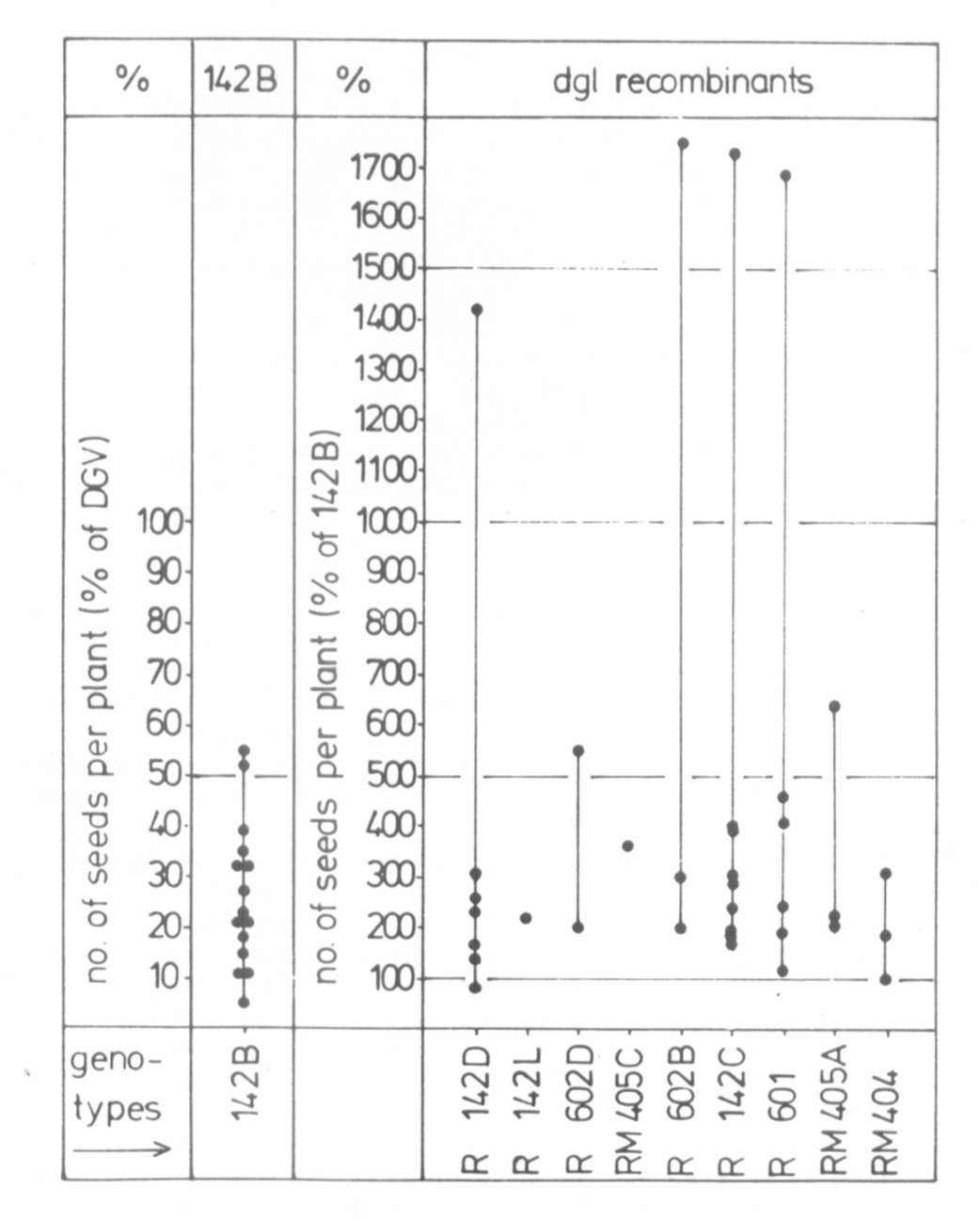The graph shows that all the
dgl recombinants studied were
considerably more productive than
the original dgl mutant in most
generations tested.
Extraordinarily high values were obtained for
the following
genotypes:
-R 142D- dgl and gbp (from
142B)
- short II for strongly shortened internodes
(from
489C)
- a
gene for linear stem fasciation with reduced
penetrance (from
489C)
-R 142C- dgl and gbp_ (from
142B)
- weak
stem fasciation with reduced penetrance (from
489C)
-R 601 - dgl and gbp_ (from
142B)
- long
I for increased internode length
(from 489C)
- weak
stem fasciation (from 489C)
- smaller leaves (from 489C)
-R 602B- dgl and
gbp (from 142B)
- weak
stem fasciation (from 489C)
All these genotypes, as well as
142B, matured earlier than 'Dippes
Gelbe Viktoria' (DGV).
In 1981 the yield of these four
genotypes greatly surpassed
their parental mutant 142B. That summer
mutant 142B had a very
low yield, only 5% of the control values of DGV.
The four recom-
binants, however, varied between 1400 and 1750 percent
of the cor-
responding values of 142B.
Clearly, dgl expression is
highly dependent on environmental
factors. Climatic conditions in
Germany during May and June,
1981, were very unfavorable for mutant
142B. This, however, does
not mean that gene dgl itself reacted
negatively to these condi-
tions. On the contrary, certain dgl
recombinants reacted posi-
tively. Moreover, recombinants R 142C, R
142D, and R 602D had
normal leaves in Varanasi, India.
Our results demonstrate that the
selection value of mutant
genes depends not only on specific
environmental factors but also
to a high degree on the overall
genotypic constitution of the
plants, the influence being positive or
negative. Although dgl is
not of any agronomic interest, similar
improvements have been at-
tained with genes of direct value for pea
breeding, for instance
with gene efr conditioning earliness
(1).
